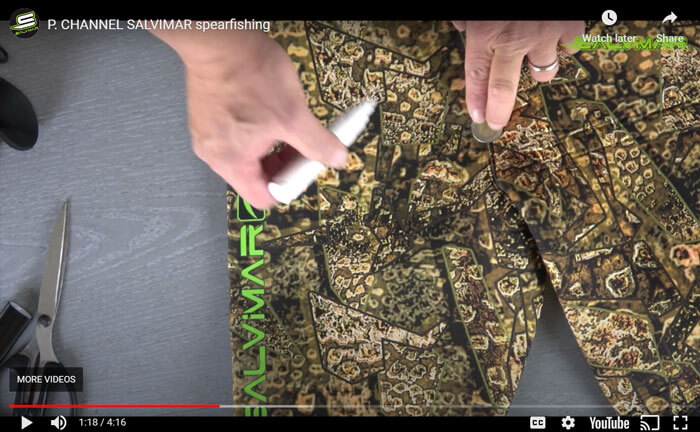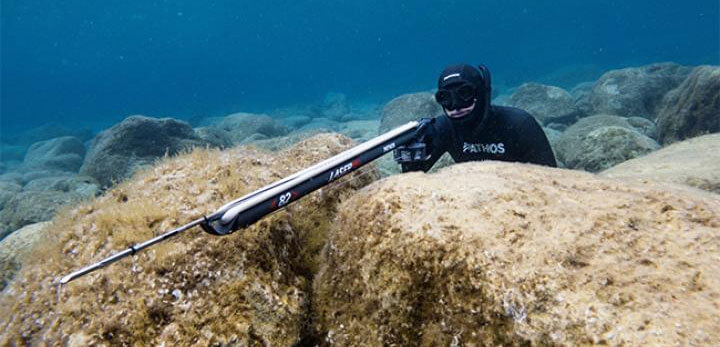
Top tips from our spearos for staying warm in the water for longer.
Getting cold in the water is the main reason why our dives get cut short. In this guide our spearo team shares a few ways you can stay in the water for longer.
🕒1 minute summary:
- Because of compression resistance, a spearo suit will allow you 6 to 8 hours of diving, vs. 45 – 90 mins in a surf suit.
- Old suits compress over the years and may offer less warmth.
- A two-piece wetsuit keeps you warmer by doubling the neoprene over your core.
- Many spearos go for a 5mm wetsuit and sometimes switch to a 7mm jacket in winter – but we do sell thicker suits if cold is more of an issue for you.
- Green neoprene is a warmer choice for dives up to 15/20m. Denser neoprene is better for deeper dives. Smoothskin or sandwich suits are great for combatting windchill on boat dives.
- Suits are warmer when they fit well. Some brands fit certain body types than others and custom suits give the perfect fit.
- Pissettes keep you warmer by keeping liquid out of your suit.
- A vest under your suit can add 2 to 2.5mm of warmth.
- Shorts over your suit can add another 2.5mm of warmth.
- You won’t lose much dexterity by switching to a 5mm glove and the psychological benefits can be huge.
- There are a few extra considerations for women (scroll to the bottom), such as choosing high waist trousers over Long Johns.
Surf suits vs spearo suits
A surf suit is a great way to get started but will only keep you warm in the water for about 45 to 90 minutes max. This is because surfer wetsuits are designed to keep you warm on or above the water but it doesn’t have any resistance to compression. When you dive to say, 10 metres, a surf wetsuit will be paper thin and will offer no warmth properties. Because it’s so thin, when you’re diving under water it’s like you’re not really wearing anything so you get a lot colder, a lot quicker. Your scuba suits will fair okay warmth-wise but tend to be stiff and compress quicker over time.
Spearfishing wetsuits are designed to be able to deal with rapid compression during freediving. In a spearfishing wetsuit you’ll find that you can stay out for pretty much 6 to 8 hours which is quite a big difference. As an added bonus, they often feature loading pads to stop those bruises when loading your gun, and padded knees and elbows to deal with the terrain commonly encountered.
Suits are getting cheaper and cheaper these days and you can pick up an excellent suit made with green Jako or Yamamoto neoprene for £200 to £250, such as the Jak Boeno Quartz or Thermoskin. Most suits are £200 to £330 for a full 5mm and should easily last 3 to 5 years with very little compression unless you’re a deeper diver and like to hunt at 15 to 25m on a regular basis.
Old suits vs new suits
Did you know that wetsuits compress over the years, due to the repeated pressure and flexing they undergo during use? The neoprene material that wetsuits are made from is composed of tiny gas bubbles, which provide insulation by trapping heat. However, over time, the pressure from diving, swimming, and other movements compresses these bubbles, reducing their ability to trap heat and therefore the suit’s insulating effectiveness. They also stretch over time which makes them thinner.
If you last bought a suit 3 or more years ago, what was a 5mm suit when you bought it may now only be offering the warmth of a 3mm suit. If your wetsuit has seen better days, it might be time to replace.
One piece or two?
A typical spearfishing suit will consist of two parts, the high waist trousers and the hooded jacket. These also come in various configurations, such as with trousers that finish at the waist, or shoulder straps with the main torso also being covered (called “Long Johns” – see pic below). You can also get one-piece spearfishing suits, but these are not so popular, hence our limited stock of this style.
The trousers and jacket combo makes these suits easier to get on, and also doubles the amount of neoprene over your core: this makes them much warmer than other suits of the same thickness such as a surf suit.
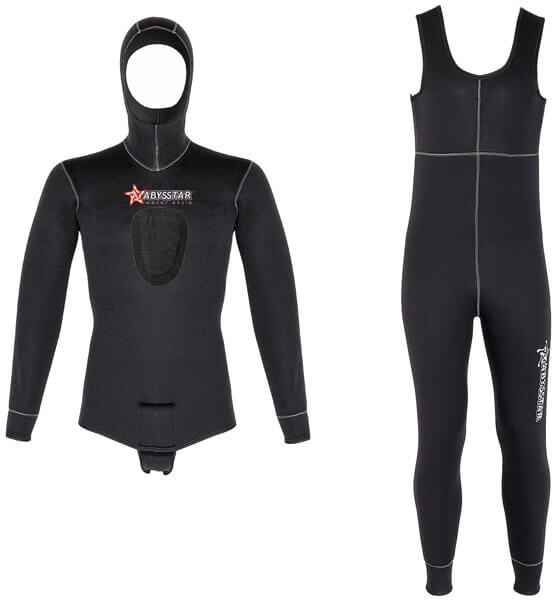
Wetsuit thickness
For UK diving you will need a 5mm wetsuit to dive through most of the year. If you want to continue diving in winter, you might switch to a 7mm jacket as the temperature drops.
The reason spearos don’t typically go much thicker is because the fabric is buoyant and the thicker it is, the more buoyant it is. BUT, we do sell much thicker suits if cold really is an issue and you will then have to combat the buoyancy with extra weights (e.g. a weight vest + belt combo).
In slightly warmer climates where they can get away with it, spearos will often tend to use thinner (3mm) two-piece suits (most brands/models of suit will have 3mm options even if they are not explicitly listed on the website).
Fabric
There are a wide range of neoprenes on the market and most manufacturers are going down the route of offering these types of suits.
The green neoprenes are made from limestone instead of petroleum, and hydrothermal energy is used in their production. This makes them much better for the planet. Additionally, they are warmer and softer. The softness comes from larger air bubbles, which allow the suit to stretch more without losing its shape. These larger bubbles also contribute to the suit’s increased warmth. The construction of these neoprenes ensures they are more durable and will last longer.
However, depending on the type, most greener neoprenes will suffer greater compression at depths past 15/20m than denser neoprenes.
Avoiding windchill: if you’re boat diving, full Smoothskin neoprenes which have zero nylon lining are one possible choice. These suits dry very quickly: as there is no nylon to hold water, you don’t feel the cold from the wind and stay much warmer. However, as the neoprene doesn’t have a nylon sheet over the top (to make it stronger and to help prevent over stretching) they are easy to damage and rip apart.
The solution to this is the sandwich-type suit such as the Polosub Forza Tre, Cressi Ricciola or Epsealon Fusion Skin (see pics below). These suits are lined open cell suits with a layer of smoothskin on the outside, meaning they are super durable and also just as warm as a smoothskin with no downside – aside from the price.
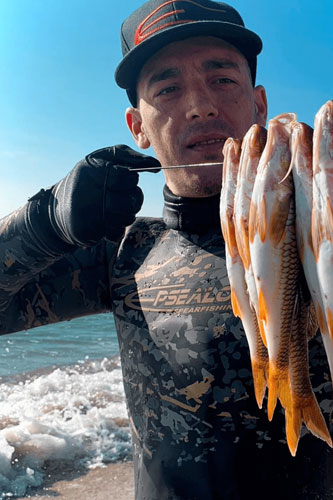
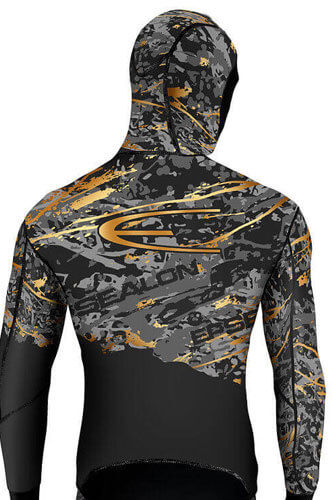
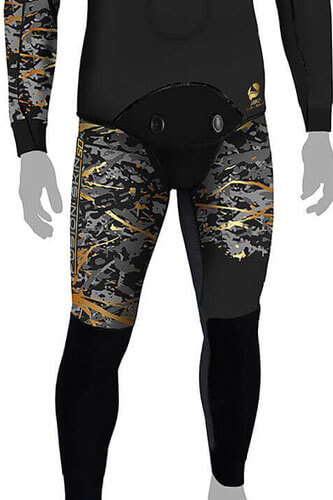
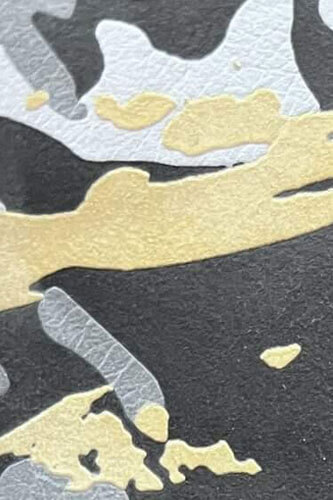
Fit
Much like with masks, the best wetsuit is always the one that fits. This must be the first consideration before anything else. Any bagginess in the suit, behind the neck or under your arms for example, will cause water to pool, making you cold; however, you should get a small gap under the armpits to allow you to stretch your arms.
All off-the-shelf branded suits are pre-made to accommodate a certain body type/shape. This varies between the brands – for example, Salvimar will fit a slimmer taller build, whereas Moray will fit a larger, broader build – it’s not standardised like in surfing. Sadly, this can restrict a lot of people to certain brands.
To find the best suit for you, first you must take measurements for height, weight, chest and waist. Compare these to the size guides included in the product images on the website. If you’re within the margins, you’re looking at a good fit. See this brand guide table and feel free to talk to the guys in the shop before buying as we know these brands inside out:
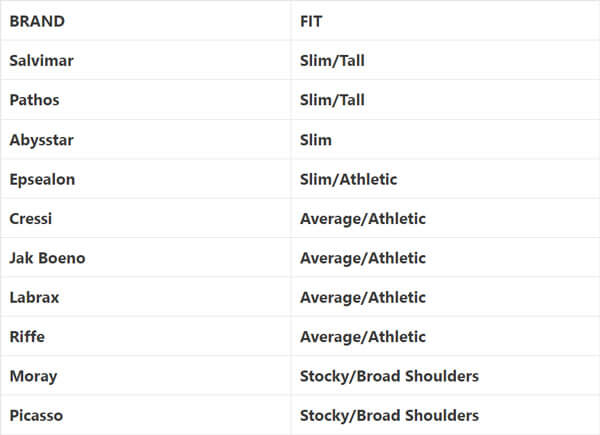
Custom vs off-the-shelf
Most off-the-shelf suits these days cover a wide variety of shapes and sizes, hence the massive range we stock. Most people can find a suit that fits them well, but there’s often a compromise somewhere – whether that’s the fit, material or aesthetically.
Custom removes any chance of compromise: and brands such as Polosub and XT Diving make excellent custom suits that are fitted exactly to the 20+ measurements required for their suits. With a wide choice of types and camos, you can customise all the options and it will fit right out of the box and last twice as long as an off-the-peg suit. It’ll also keep you a lot warmer as there will be less pockets of water.
The only downside is they require a lot of measurements and while that’s not an issue in itself, some people worry about making mistakes
The pissette
Not only does the pissette represent the height of fashion, but jettisoning the urine away from your body stops liquid pooling which saps your body heat. This wacky device makes a huge difference and is not to be underestimated. In the video below you can see how a pissette is fitted to your wetsuit (the video is in Italian but the explanation is not really needed). View all pissettes here.
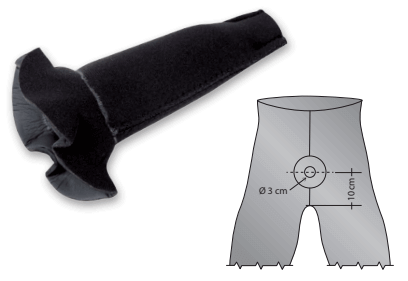
Picasso pissette £11.99
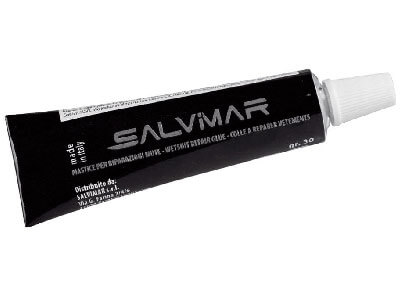
Neoprene glue £4.99
Although don’t do this…
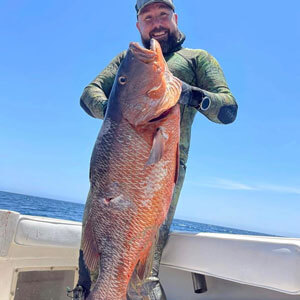
“Once when I was diving with my buddy Mat Coombe, I had soaked my suit in body wash and conditioner to make it smell better the night before. I didn’t rinse the soap off properly and during the 20 min walk to the dive spot, it all foamed up in my suit and start foaming out the end of my pissette to the shock and confusion of the people we were passing – a lesson learned the hard way!!” 😂🤣
~ Tony
Extra layers: vests
If you’re prone to feeling the chill, a vest, worn under your suit, can add a 2 to 2.5mm layer. These are an alternative to buying a thicker jacket for cold weather as well.
Vests not only add thickness but can limit infiltrations and water movement inside the suit.
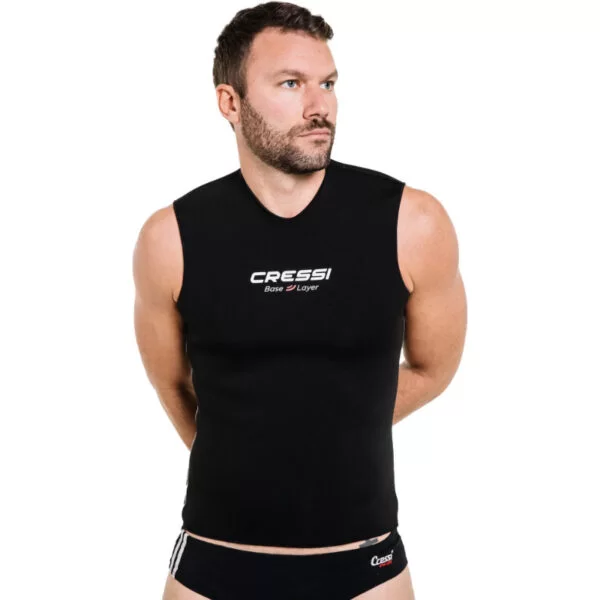
The Cressi vest gives you 2.5mm neoprene under vest for wearing under any type of wetsuit. It is internally and externally lined for durability and ease of fitting. Perfect for diving in colder climates and adding extra warmth without the stiffness of wearing a thicker wetsuit overall.
Extra layers: shorts
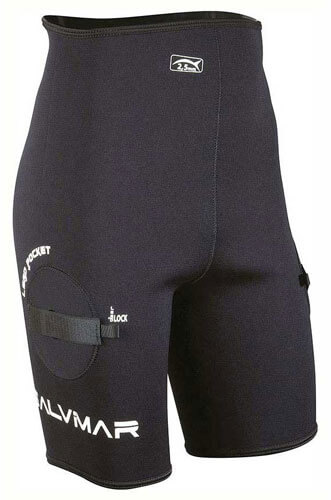
High waist shorts with an integrated velcro pocket.
+2.5mm thickness
Can be worn alone or over your wetsuit to improve the warmth.
If despite everything else you are still feeling the cold then these shorts are another thing to try and surprisingly effective. They’re also really popular with people doing Norway trips in the Artic circle.
£45.99 / see more
Gloves and socks
Although some feel the cold more in their extremities than others, most people will use a 3mm sock and a 3mm glove. and then maybe in the colder months of winter they’ll go to 5mm socks and gloves.
If you switch for a 5mm glove, you do lose some dexterity but nowhere near as much as you would expect. The phycological improvement of having warm hands really makes a difference to your overall comfort in cold weather conditions so if it keeps you in the water longer, go for it – you’ll be a better diver for it.
Our bestsellers are:
Picasso Supratex Gloves (3mm or 5mm)
Picasso Supratex Socks (3mm, 5mm or 7mm)
Tips for women:
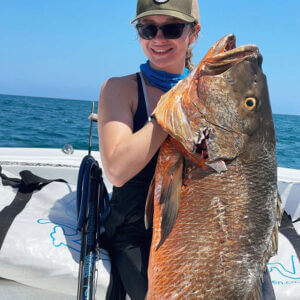
“While everyone feels the cold differently, my experience is that women tend to feel the cold quicker, despite having a higher percentage body fat than men. If you do have a tendency to feel the cold, consider a 7mm top / 5mm bottoms all year round, with a vest in winter if you need it. This gives you a nice cosy 12mm around your core.”
“A thicker suit may mean you need a bit more weight to combat the buoyancy of neoprene. You may want to try a weight vest (for up to a third of the desired weight) combined with a weight belt, to achieve a more balanced feeling in the water.”“Just like men, a snug fit means a warmer dive for us girls. However, we do have a few additional challenges there. First, bums, chest and hips fluctuate wildly between women, which makes selecting the perfect suit tricky. The best bet is to speak to the shop about your body type and they’ll guide you. Second, women tend to prefer the high waist trousers, because the long johns don’t fit well over our chests. A bonus of these type of trousers is that it’s easier for us to go to the toilet as we don’t have to take off the jacket.”
~ Jodie
Our top recommendations:
Green Neoprenes:
Jak Boeno Thermoskin & Quartz
Epsealon Shadow & Tactical Stealth
Salvimar N.A.T & Krypsis 101
Moray Pelagic & Weedline
Denser Neoprenes:
Smoothskin:
Polosub Custom Smoothskin
Pathos Team & Ultra
Sandwich:
Epsealon Fusion Skin
Polosub Custom Forza Tre

